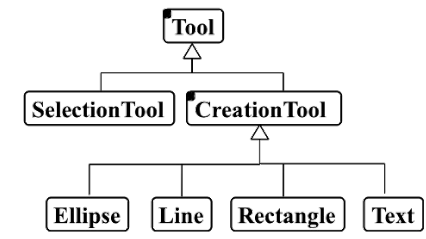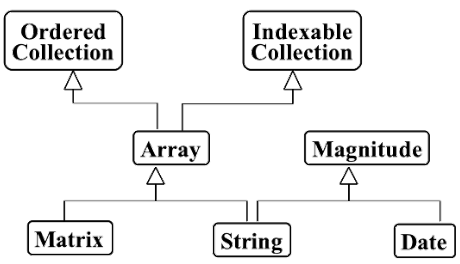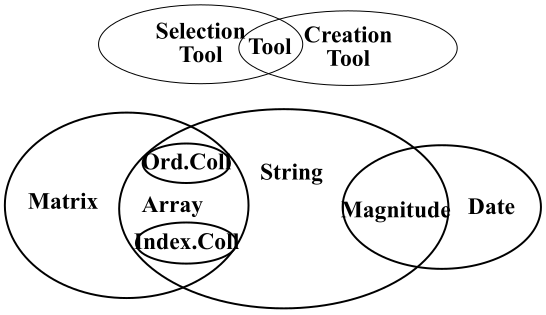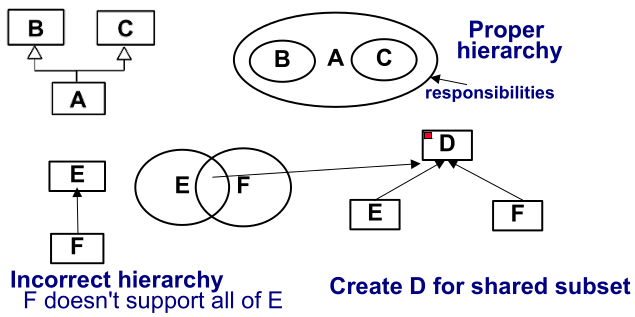9. Software Hierarchies
31/10/22
Class Hierarchies
- Represent essence of approach
- Provide most potential benefits
Hierarchy Graphs
Extend notation slightly to explicitly identify abstract classes
- Fill in top left corner of a box of an abstract class

Multiple Inheritance
Multiple inheritance can also be included in a hierarchy graph

Venn Diagrams
Can represent responsibilities of a class as a set, so shared responsibilities show up in a venn diagram

Guidelines on Building Good Class Hierarchies
- Model is-kind-of (or is-type-of) hierarchies
- Factor common responsibilities as high as possible
- Don't allow abstract classes to inherit from concrete ones
- Eliminate non-functional classes
Is-kind-of Hierarchy
Class A is derived from B, only if supports all its responsibilities

Move Common Responsibilities up Hierarchy
Factor common responsibilities as high up as possible Design as many abstract classes as possible
- Likely to result in maximal design simplification, design sharing, and code sharing
- Likely to make system more extensible -- later improvements are likely to be more easily integrated
- Decision criteria for creating abstract classes can involve speculation on possible future extensions/modifications
- One responsibility is enough to justify an abstract class
- Need at least two children, otherwise difficult to identify good generic definition of responsibilities
Abstract Classes in Hierarchy
- Should not inherit from concrete classes
- Abstract class behaviour - implementation-independent
- Concrete class behaviour - implementation-dependent
- Characterisation is violated if an abstract class inherits from a concrete one
Eliminate Classes
- Classes that add no new functionality are normally eliminated
- Could have no new responsibilities, but still add functionality.
- Responsibilities are inherited by children but assigned to parent